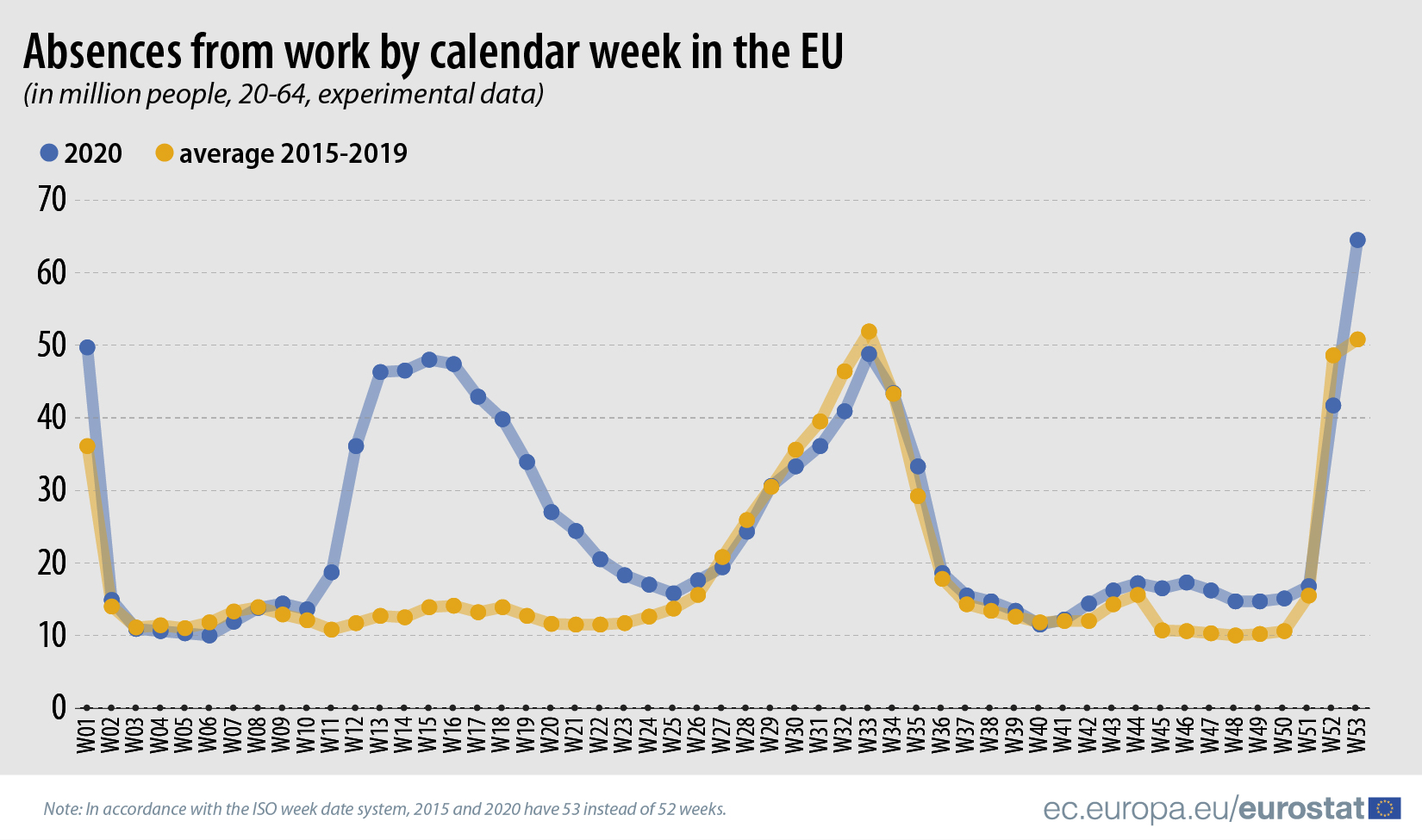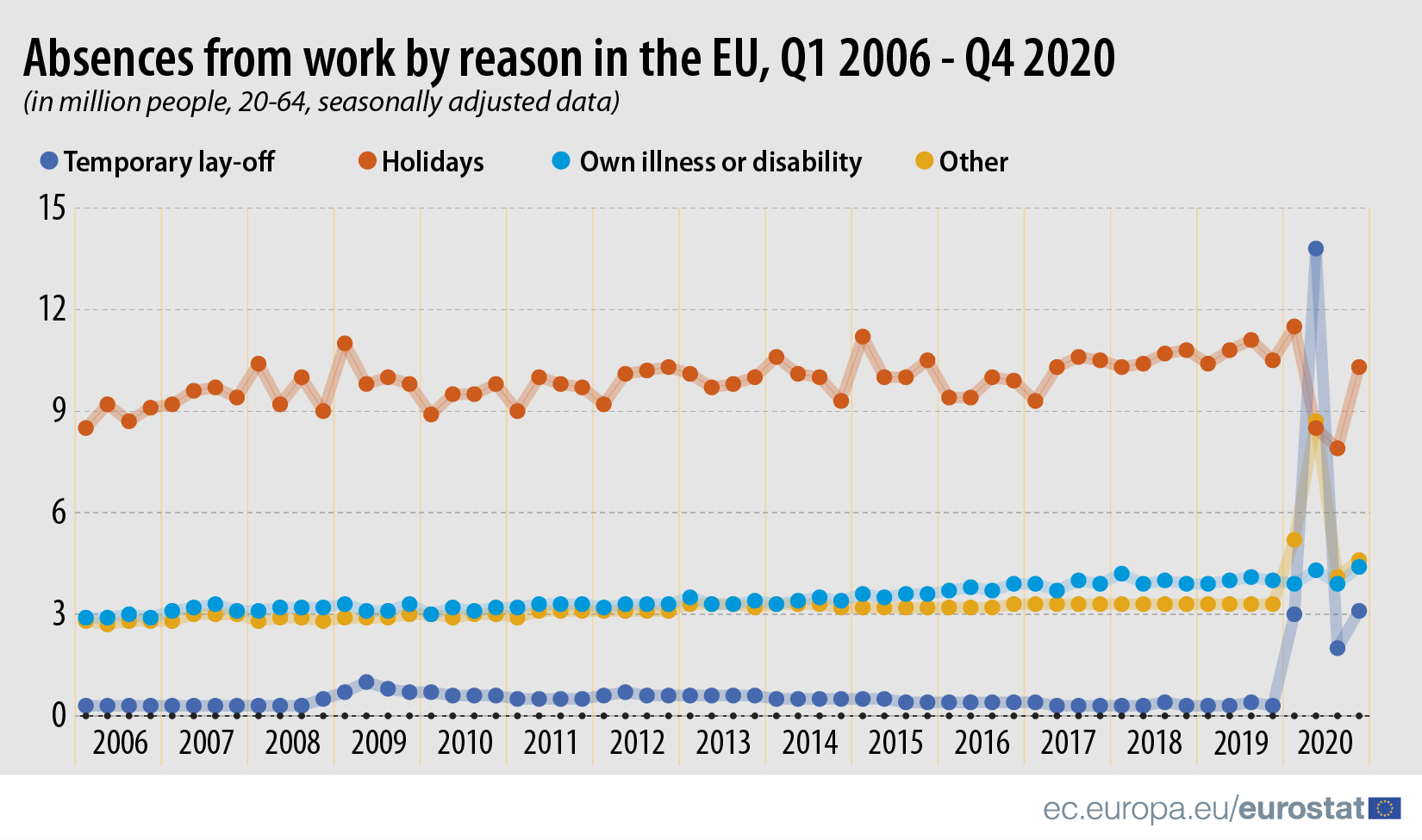The beginning of 2020 was marked by an outbreak of the worldwide pandemic COVID-19, leading almost all governments around the globe to take restrictive measures. To prevent the spread of the virus and to ensure distancing of people, many businesses were temporarily shut down and many employees confined to their homes. The number of people absent from their jobs reflected these changes.
In 2020, five peaks in the number of absences from work were recorded in the EU: the usual ones of early January, mid-August and late December as well as two further peaks in April and November due to the COVID-19 pandemic. In week 15 in April 2020, 34.0 million more absences were reported compared with the 2015-2019 average of that week. Although a bit milder, a fifth peak occurred in week 46 in November 2020, when 6.7 million more absences were recorded compared with the 2015-2019 average.
This information comes from the recently published data on the labour market in the fourth quarter of 2020. The article presents only a handful of findings from the more detailed Statistics Explained articles on weekly absences from work and quarterly absences from work.
Source dataset: lfsi_abs_w
The rise of absences from work in the EU in 2020 was primarily due to the increase in temporary lay-offs. The levels of temporary lay-offs had been relatively stable at around 0.5 million people before 2020, with the exception of 2009 when it increased to 1.0 million people.
However, in Q1 2020, 3.0 million people were absent from work because of temporary lay-off. In the following quarter (Q2 2020), this number increased even more sharply, by nearly five times, and reached 13.8 million. In Q3 2020, the number of temporary lay-offs fell steeply to 2.0 million. Nevertheless, this was still considerably more than before the pandemic (0.3 million in Q4 2019). In Q4 2020, the number of temporary lay-offs rebounded to a level similar to the beginning of the year (Q1 2020) and reached 3.1 million.
Source dataset: lfsi_abs_q
For more information:
- Eurostat website section dedicated to EU Labour Force Survey
- Eurostat database of EU Labour Force Survey
- The notion of temporary absence from work refers to situations in which a period of work is interrupted by a period of absence. This implies that persons are generally to be considered as having been temporarily absent from work and therefore employed, if they had already worked at their current activity and were expected to return to their work after the period of absence. Persons can be absent from work due to a number of reasons, among which holidays, own illness, and temporary lay-offs.
- Temporarily laid off people are classified as employed if they have an assurance of return to work within a period of 3 months or receive 50% of their wage or salary from their employer.
To contact us, please visit our User Support page.
For press queries, please contact our Media Support.



